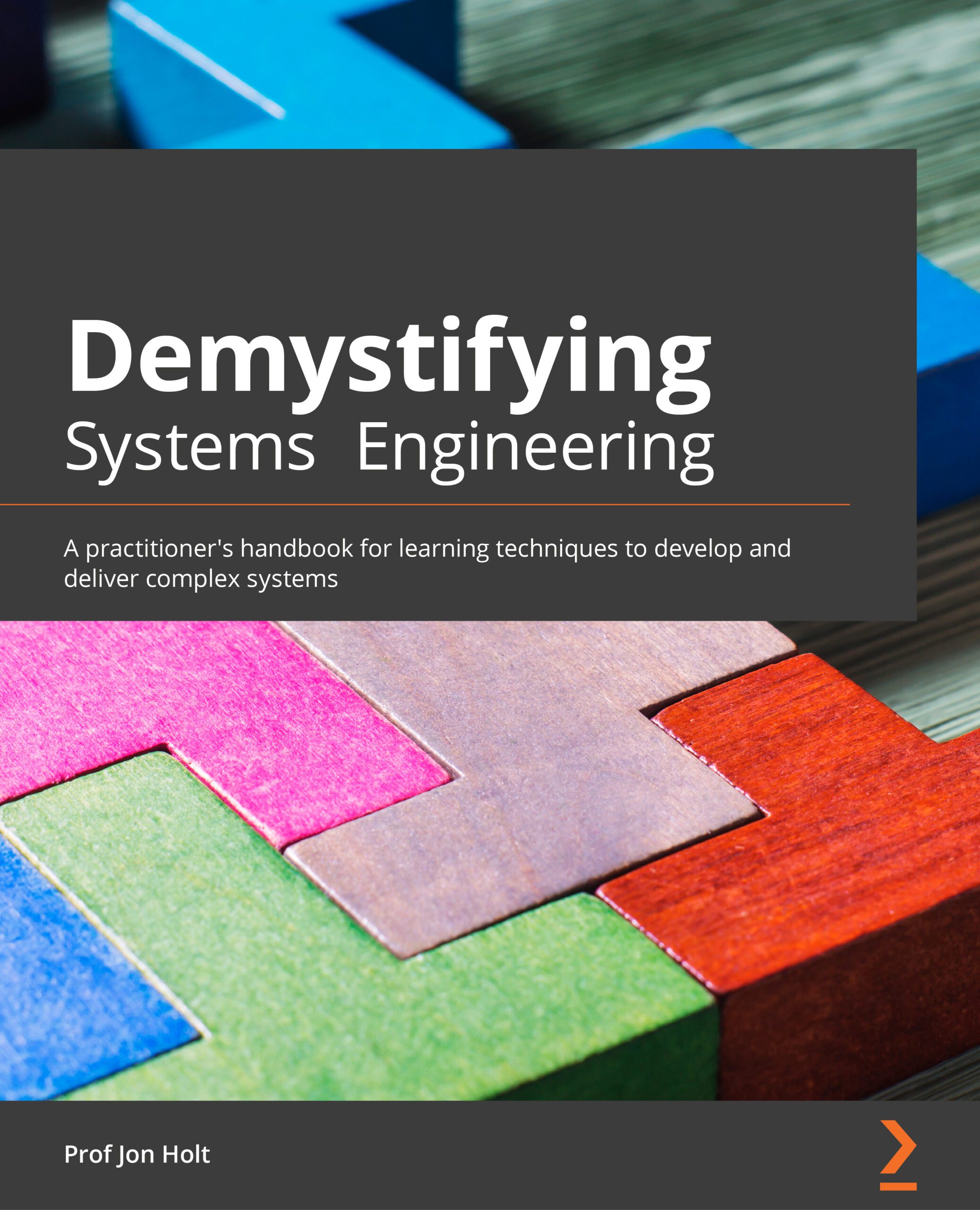Jon Holt is the author of Demystifying Systems Engineering, we got the chance to sit down with him and find out more about his experience of writing with Packt.
Q: What is/are your specialist tech area(s)?
Jon: Model-based Systems Engineering
Q: How did you become an author for Packt? Tell us about your journey. What was your motivation for writing this book?
Jon: I was contacted by Packt who, based on my previous 16 books, asked me to write the new book. They initially made contact through LinkedIn, where they had identified me as a potential author based on my profile.
Q: What kind of research did you do, and how long did you spend researching before beginning the book?
Jon: I already knew the content, so there was no need for a large amount of research. However, the content is mainly based on almost 30 years of experience applying these techniques. The whole modeling approach has evolved enormously over the last few years, and I have tried to bring an up-to-date picture of the current best-practice modeling techniques for Systems Engineering.
Q: Did you face any challenges during the writing process? How did you overcome them?
Jon: I am already an experienced author, however, having said that each book brings its own challenges either through the book-writing itself or because of the outside world events. As I started writing the book, the world went into lockdown!
Q: What’s your take on the technologies discussed in the book? Where do you see these technologies heading in the future?
Jon: In terms of the future, I see applying modeling techniques in the form of MBSE as the best and most effective way to implement Systems Engineering. This is also reflected by the International Council on Systems Engineering (INCOSE) who predicts that by 2025, all Systems Engineering will be model-based.
Q: Why should readers choose this book over others already on the market? How would you differentiate your book from its competition?
Jon: This book assumes no prior knowledge of Systems Engineering or modeling. The emphasis in this book is on the practical application of these techniques, as well as a sound theoretical background of the concepts. The book provides just enough of the detail of techniques, such as the SysML, to get people applying them successfully. At the same time, the book does not get bogged down in too much detail in any specific technique and points towards other books that describe such techniques to a finer level of abstraction.
Q. What are the key takeaways you want readers to come away from the book with?
Jon: The book will provide a good overview of Systems Engineering and how a model-based approach can be used to apply this. By focusing on the application of these techniques readers will be I a position to ascertain where the true value of MBSE lies for them. The book also shows examples of current best practice in terms of methodologies, standards, and where to go to take things further.
Q. What advice would you give to readers learning tech? Do you have any top tips?
Jon: In order to understand any discipline it is necessary to have a sound theoretical and conceptual background. However, to become a master this understanding must be coupled with applying these techniques in the real world in order to be able to see for yourself where the true value lies. Learning Systems Engineering is no different, so I would encourage people to learn what they can from the book and then, crucially, to go and apply it in their own work.
Q. Can you share any blogs, websites and forums to help readers gain a holistic view of the tech they are learning?
Jon: The main source for Systems Engineering knowledge is the International Council on Systems Engineering (INCOSE) and their website contains many useful resources. There are also many local chapters, for example, my own local chapter is INCOSE UK, where you can get more directly involved with Systems Engineering activities. See https://www.incose.org/ and incoseuk.org For lots of videos concerning MBSE (that discuss some of the topics in the book), lectures and talks, many of which are delivered by the author, see the ‘MBSE Embassy’ video channel on YouTube. The Institution of Engineering and Technology (IET) also publishes a number of the book in this rea and provide e-learning courses in some of the techniques via the IET Academy – see: academy.theiet.org
Q. How would you describe your author journey with Packt? Would you recommend Packt to aspiring authors?
Jon: Writing any book is a challenge and the success or failure of such a venture will very often depend on the support provided by the publishing team. I am delighted to say that the publishing team at Packt has been excellent throughout: excellent and consistent communication, very supportive with queries, and always polite and professional.
Q. Do you belong to any tech community groups?
Jon: I am actively involved with INCOSE and, in particular, INCOSE UK through my role as Technical Director. I am also actively involved in a number of their products and services. I am active on LinkedIn and am a member of several groups, such as MBSE, Systems Engineering, and SysML. In fact, each Friday morning I produced an MBSE-based puzzle that has quite a good following globally via my LinkedIn page.
Q. What are your favorite tech journals? How do you keep yourself up to date on tech?
Jon: The main journals are the INCOSE journals and magazines, and also the IEEE Systems and IET publications.
Q. How did you organize, plan, and prioritize your work and write the book?
Jon: I treat every aspect of my work as a System, therefore I look at what is expected by the various stakeholders, understand the problem from each of their points of view and then solve the problem, before delivering the final solution. It’s the only way to work consistently!
Q. What is that one writing tip that you found most crucial and would like to share with aspiring authors?
Jon: Enjoy it!
You can find Jon’s book on Amazon by following this link: Please click here









